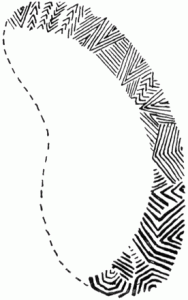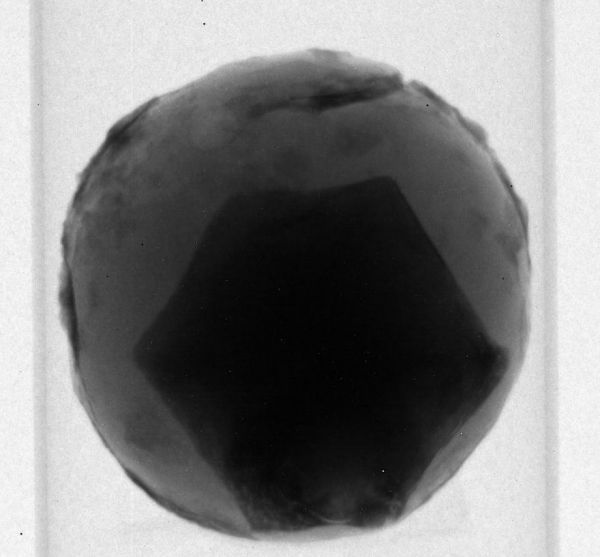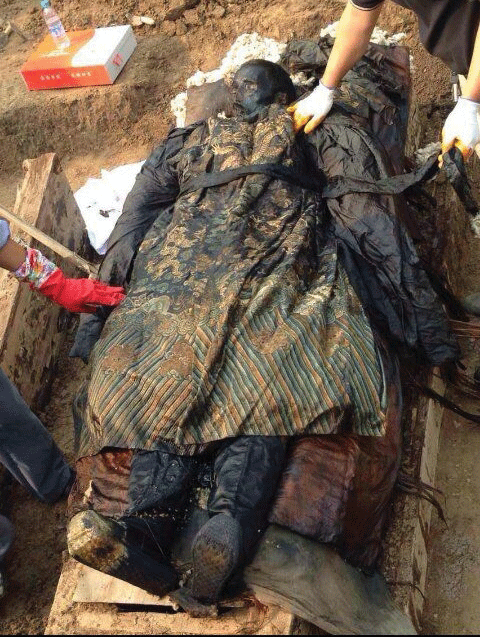Many Americans missed a repugican proposal to destroy the
public school system because they were awaiting President Obama's State
of the Union address…
In William Shakespeare’s play “Romeo and Juliet” there is a famous line, “
What’s in a name? That which we call a rose by any other name would smell as sweet,” and it is applicable to the repugican school privatization scheme they call “
vouchers,”
and regardless the name, the plan smells rotten to the core. There has
been a concerted effort to transform America’s public education system
to a taxpayer-funded private religious school scam, and last week many
Americans missed a repugican proposal to destroy the public school
system because they were awaiting President Obama’s State of the Union
address. However, if they listened carefully to two of the repugican
responses, they would have noticed the drumbeat to school privatization repugicans claimed is “
all about the children.”
Just before the President’s address, Lamar Alexander (r-TN) introduced a new bill that robs “
about
$24 billion, or 41% of current federal spending on elementary and
secondary public schools, and allow states to decide to give families
the money as individual scholarships to pay for private school tuition,
or to attend a charter school.” Alexander’s bill will also “
give
the states flexibility to design programs that would follow children not
only to the public or charter school of their choice, but also to
accredited private schools, tutoring centers, after-school enrichment
programs and any other educational program the state approved.” Alexander
said of his proposal, “
There
would be no better way to help children than by allowing states to use
federal dollars to create 11 million new opportunities to choose a
better school.”
At the same time, another repugican, Tim Scott of South Carolina, introduced bill to “
provide
federally funded vouchers to children with disabilities, children
living on military bases, and children living in impoverished areas”
to spend where they pleased including for private religious
instruction. School voucher schemes are nothing new and were dreamed up
by
extremists who
hate public education and have been on a crusade to
get rid of public schools in America once and for all.
During her official repugican response to the President’s State of the Union, Cathy McMorris Rodgers
assured viewers that “
We have plans (read privatization
) to improve our education and training systems so you have the choice to determine where your kids go to school.” Following up on the cabal’s privatization narrative, Rand Paul
called for solutions from “
the marketplace” (read privatization) promoting “
economic freedom zones” that allow for “
school choice” and give parents an “
educational tax credit;”
because as Paul claims, parents know “what’s best” for their kids’
education. It is a favorite repugican ploy to sell privatization to the
American people to “rescue” students from public schools so they can
attend privately run religious schools at taxpayers’ expense.
Alexander’s bill “
decentralizes authority, giving states the power to set their own policies,” and Education Week noted that Alexander and Scott’s bills “
would allow states to set their own rules and guidelines for how the money would be distributed.”
As one might expect, allowing repugican-controlled states to set
guidelines and rules for spending taxpayer dollars meant for public
schools is a disaster, and tragically the unconstitutional practice of
using public money for private religious instruction is happening all
across America.
For example, a report from the state Department of Education revealed
that Indiana taxpayers are funding $21 million to give students a
private-school education that previously had been paid by their parents.
In Wisconsin, another report revealed that a $3.2 million new statewide
program that sends students to private schools at taxpayer expense
mostly serves children who were getting that privilege paid for by their
parents. The state legislature in North Carolina recently passed a bill
to divert $10 million of taxpayer money meant for public schools to
private schools, including those that “
provide an education that is christ-centered” and teach “
the truth of scripture” with “
bible-based facts.” False bible-based facts such as “
dinosaurs and humans co-existed on Earth;
slave-masters treated their slaves well;
the
KKK fought the decline in morality by using the sign of the cross; and
gay people have no more claims to special rights than child molesters or
rapists.”
The American Legislative Exchange Council (ALEC) are
purveyors of voucher plans that claim their efforts are “
all about the children,”
but they are a means of spreading religious discourse and ripping off
taxpayers while destroying the public school system. According to
research by Zack Kopplin, there are
over 300 “
documented
voucher schools, in nine states and the District of Columbia, which are
receiving public money, and are teaching creationism in their science
classes with the most creationist voucher schools in Florida with 164
schools.” In Louisiana, the
statewide school voucher scheme has “
at least 20 schools that use creationist curriculum that were awarded 1,365 vouchers at a cost of $11,602,500 in taxpayer money annually.”
The Washington Post found that In Washington D.C.,
another school system with a sordid voucher history, the lack of oversight of the district’s program lead to “
hundreds of students” using voucher dollars to
“attend
schools that are unaccredited or are in unconventional settings, such
as a family-run K-12 school operating out of a storefront, a Nation of
Islam school based in a converted residence, and a school built around
the philosophy of a Bulgarian psychotherapist.” WaPo noted that “
At
a time when public schools face increasing demands for accountability
and transparency, the 52 D.C. private schools that receive millions of
federal voucher dollars are subject to few quality controls.
The
government has no say over curriculum, quality or management, and
parents selecting a school have little independent information, relying
mostly on marketing from the schools.” The voucher scams are
notorious for funding charter, private, and religious schools that lack
accountability unlike public schools under the repugican “No Child Left
Behind” program John Boehner used to close public schools and propagate
underperforming charter, private religious, and taxpayer-funded voucher
schools.
Like charter schools, private voucher schools
do not have “
any academic test score advantage” over students in public schools, and National Education Policy Center research experts
examined loads of reports and determined that “
even
the most dedicated pro-voucher researchers have been unable to find
clear evidence of superior performance by students attending private
schools as part of a voucher program;” vouchers also “
do not improve college enrollment rates.” The executive director of the National School Boards Association, Thomas J. Gentzel, said “
The big issue is really that lack of accountability.”
According to education historian Diane Ravitch, most voucher proponents
are doing whatever they can to prevent enforcement of accountability
such as in Indiana
where
lawmakers were considering banning testing for voucher schools. It is
typically repugican to demand accountability for the public education
system to eliminate public schools to make room for underperforming
voucher private and charter schools with no accountability because they
fail miserably.
The repugicans are on a tear to decimate public education in America and
they have a willing accomplice in the Senate Democratic caucus.
Self-promoting scam artist, repugican posing as a Democrat, and ardent
supporter of school privatization Cory Booker champions taxpayer-funded
vouchers for charter and religious private schools and parrots the repugican mantra “
it’s all about the kids.” Booker was called out by Glen Ford on the
Black Agenda Report for “
very
much appearing to be a mainstream Democrat, but Booker has never turned
his back on the private school hucksters that launched his political
career.” Privatization or vouchers, it is all about robbing taxpayer
dollars for public schools and handing it directly to charter, private,
and religious schools as well as destroying teacher unions, public
schools, and punishing women earning living wages. Women make up well
over 70% of the workforce in public education and it is anathema to repugicans to allow women to earn decent wages.
Lamar Alexander’s bill is an assault on public schools that cuts 41%
of education funding to hand $24 billion to private, religious, and
charter schools that have no accountability to taxpayers footing the
bill. The idea of giving states, particularly repugican-controlled
religious states across the bible belt, free rein to direct public
school money to private religious schools teaching creationism as
science is an abomination that should enrage Americans that their tax
dollars are being used to indoctrinate the next generation of christian
extremists determined to replace the Constitution with biblical law.
Although the privatization, or voucher, scam is a gift to private
enterprise, it is another well-planned assault on America by christian dominionists intent on controlling every aspect of society; including
education. What Alexander’s bill also accomplishes is shuttering 41% of
America’s schools and kill tens-of-thousands of teacher jobs that will
likely target urban areas with large minority populations because it is
just as important for repugicans to take educational opportunities from
minorities as it is their voting rights, prospects for decent paying
jobs, and equal rights that are evaporating at about the same rate as
public education.




 Eight
new events in the winter Olympics? Yes, there are eight new
competitions that have never been in the Games, but there are not eight
new sports. For example, women’s ski jump is new, although it
is the same sport as men’s ski jump. There are now enough competitive
female ski jumpers to make it worthwhile. And there will be a team medal
for figure skating, which will make it more like the gymnastics
competition of the Summer Games. Men's, women's, and pairs figure
skaters and ice dancers will skate an additional round to win points for
their nation's skating team. But there are some brand-new sports we
will see at Sochi, such as halfpipe skiing.
Eight
new events in the winter Olympics? Yes, there are eight new
competitions that have never been in the Games, but there are not eight
new sports. For example, women’s ski jump is new, although it
is the same sport as men’s ski jump. There are now enough competitive
female ski jumpers to make it worthwhile. And there will be a team medal
for figure skating, which will make it more like the gymnastics
competition of the Summer Games. Men's, women's, and pairs figure
skaters and ice dancers will skate an additional round to win points for
their nation's skating team. But there are some brand-new sports we
will see at Sochi, such as halfpipe skiing. 
























